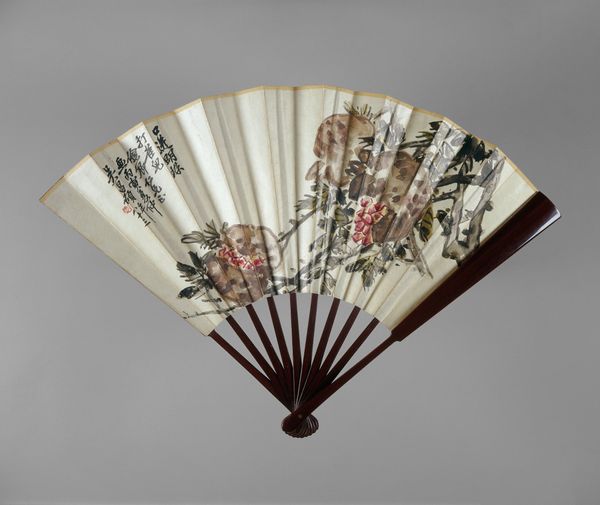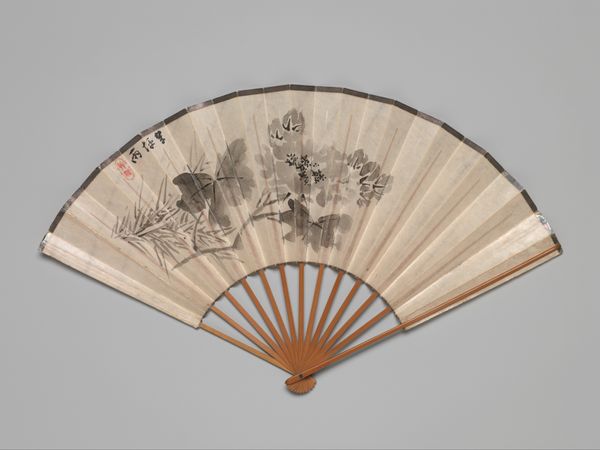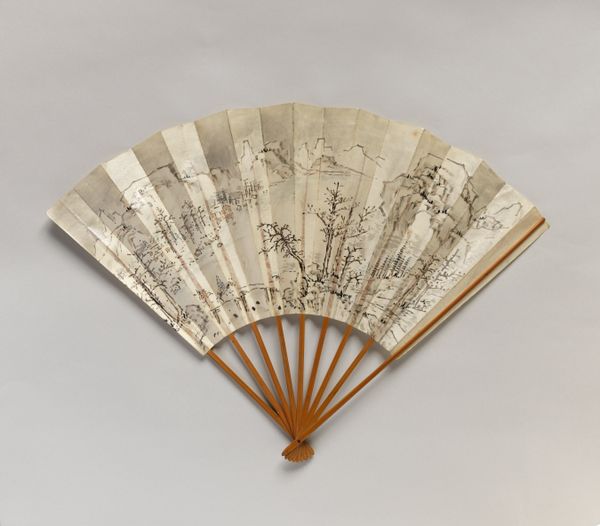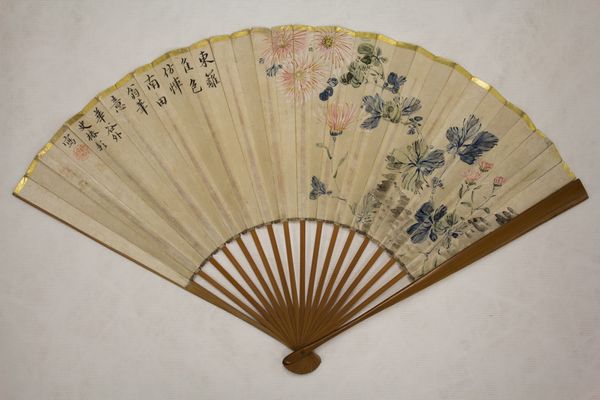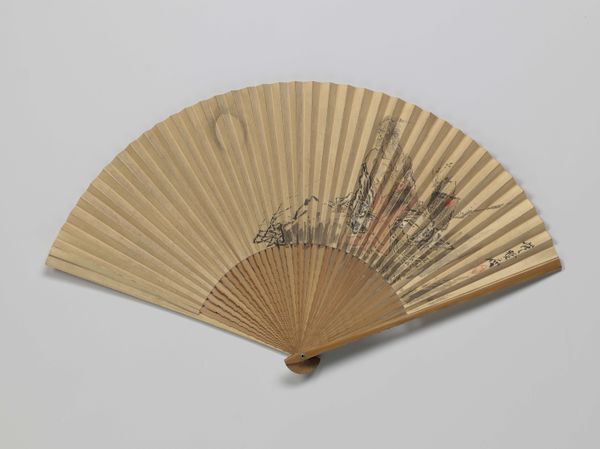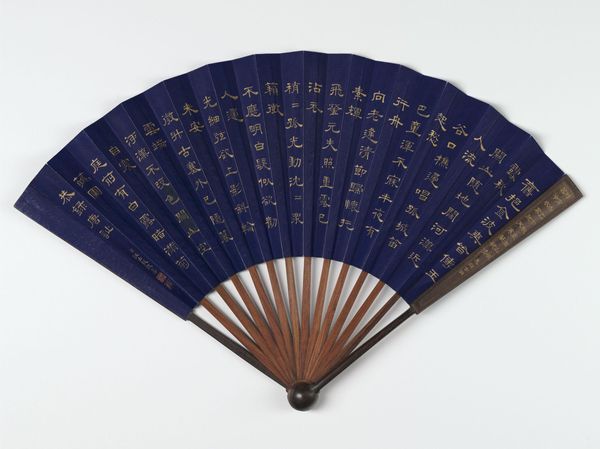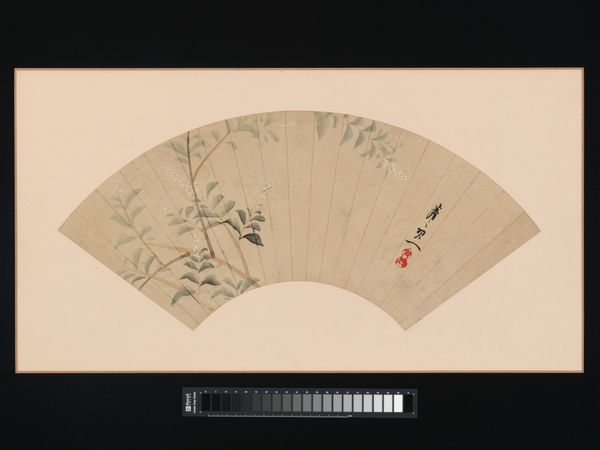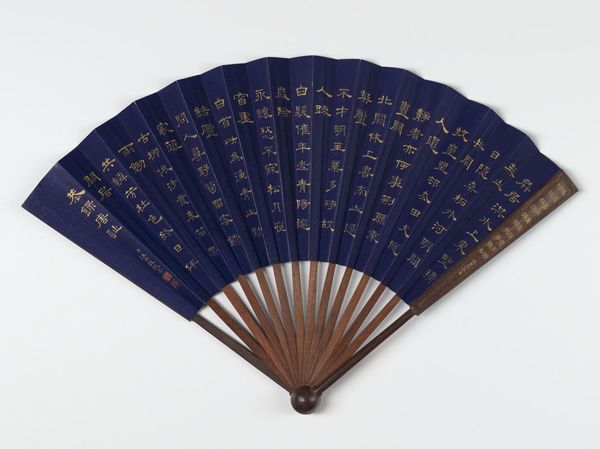
painting
#
painting
#
asian-art
#
form
#
line
Dimensions: Image: 6 11/16 × 18 11/16 in. (17 × 47.5 cm)
Copyright: Public Domain
Curator: This exquisitely painted fan, titled "Peaches, Pomegranate, and Fingered Citron", was crafted by Yamamoto Baiitsu in 1832. It resides here at The Met. Editor: What strikes me immediately is its delicate nature. The muted palette and the way the fruit seems to float across the surface, it almost defies gravity, yet it exudes a quiet elegance. Curator: The artwork embodies the scholar-artist tradition, valued for its calligraphic line work, which is meant to showcase the painter's spirit. The use of empty space, particularly in fan paintings, offers a glimpse into nature while also serving to focus the gaze. We often see a combination of art and functionality. Editor: Functionality becomes quite interesting when we consider who might have used this. A fan, a subtle object used perhaps for courting, yet it is emblazoned with artistic intention, designed to be read in very specific ways. We might wonder what political messages might lie beneath the fruits, symbols of longevity and prosperity, given the economic situation of Japan at the time? Curator: Well, I believe one should first consider that each of these fruits were not casually placed there but purposefully selected, bearing different shapes. Note that they have very distinct outlines and are meticulously rendered to emphasize the tactile qualities: smooth peaches, rough citron. The asymmetrical composition itself balances form and void perfectly, does it not? Editor: It does, and yet form in painting of this period, can be seen as a powerful instrument for social commentary, beyond just the beauty we find in shape. Were there specific exhibitions of similar art, how were these artisans recognized publicly? The materiality of ink on silk – these carry the weight of socio-political climates just as the imagery does. How much was something like this to acquire? Curator: I acknowledge your reading and the inherent questions of accessibility; still, I remain drawn to the harmony the artist achieves by playing with asymmetry, texture, and color – aspects that elevate it beyond a mere luxury good, wouldn’t you agree? Editor: Indeed, though viewing its beauty in relation to socio-economics perhaps lends the piece even greater complexity and context. I shall forever have this piece contextualized from now on! Curator: Likewise, now seeing the societal contexts of its very first patron truly deepens my regard of it.
Comments
No comments
Be the first to comment and join the conversation on the ultimate creative platform.

